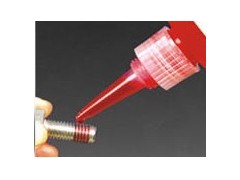- Two-component adhesive
- Auto motive epoxy adhesive
- Epoxy adhesive for stone
- Structural adhesive
- Methacrylate adhesive
- Auto spare parts / Hardware
- Sealant adhesive
- Gasket maker
- Silicone sealant
- Fixing foam
- Light industrial / DIY glue
- Contact cement / neoprene glue
- Wood glue / white glue
- SBS adhesive / spray glue
- PVC glue
- Daily use glue adhesive
- Super glue / cyanoacrylate adhesive
- Adhesive tape
- Fly / mouse killing glue

Home > Notre information
Points for attention in using anaerobic adhesives and waterborne epoxy adhesive
1. can not be used for large gap bonding and sealing, usually the gap should be less than 0.25mm.
2., it is not suitable for bonding of porous materials or porous materials.
3. if the bonding area is larger, the smaller the gap, the more curing.
4. the curing speed of anaerobic adhesive is related to the properties of the adhesive. The curing rate of the active surface (such as clean steel, iron, copper, manganese, aluminum alloy, etc.) is fast and the bonding strength is high. The inert surface (such as pure aluminum, stainless steel, zinc, cadmium, gold, glass, ceramics, thermosetting plastic, etc.) has a slow curing rate and low bonding strength. The hysteresis surface (such as the adhesive surface has been positive or oxidation treatment and electroplating and so on) can not be adhesive. It must be treated by surface treatment and coated with accelerant. It can be bonded. The single surface coating accelerator is better. After 5 minutes, the adhesive can be applied to the anaerobic adhesive.

5. it is ideal to clean the adhesive surface with the corresponding cleaning agent two times.
6. the proper coarsening of the adhered surface can improve the bonding strength and the surface roughness is Ra12.5 m.
The 7. gap should be 0.01 to 0.05mm.
8. the bonding environment should be dry and the relative humidity is less than 60%.
9. at room temperature for 3 hours, the bonding strength can reach 50% to 60% of the rated value, and the maximum value can be reached after 24 hours. The curing time can also be heated, when the curing time is shortened and the bonding strength can be improved.
10. should be avoided in the alkaline medium.
11. can be used for sealing, and its pressure resistance is up to 40MPa.
12. if the adhesive layer is dismantled, the adhesive can be added to 150~200 C or with a larger torque. If the heating condition is not allowed, the organic mixed solvent such as dichloromethane can be used.
13. do not fit into metal containers, nor can containers of other materials be filled.
With the new development of the society, the demand for glue is getting higher and higher. In order to adapt to the science and technology, the development of modern industry, waterborne epoxy resin glue water came into being, and added a kind of non-toxic, pollution-free and excellent glue for the adhesive industry.
Water epoxy resin glue is the emulsion formed by the ordinary epoxy resin dispersed in the water by particles or colloids. The difference in the size range of the dispersed phase of the epoxy resin is divided into two types, namely, the I type epoxy system and the II type epoxy system.





